History buffs and spy fanatics alike will be excited to hear about the recently opened record-breaking KGB Spy Museum in Chelsea. The largest collection of Soviet-era KGB espionage objects yet, the museum gives a one-of-a-kind perspective on not only Cold War espionage, but also the modern world of spy-craft.
The mission of the museum is simple. They aim to inform the public about the world of the KGB and Cold War intelligence in a non-biased and apolitical way. The museum’s goal is to be as immersive as possible; traditional Soviet music plays throughout the building, and when visitors enter, a museum official appears from the shadows dressed in all black. A man in a trench coat wanders the building as if in the middle of an operation, but ask him any question about the KGB and he will gladly show you all the museum has to offer. Interactive exhibits like spot-the-spy games and a mugshot photo-booth punctuate the array of artifacts, making the museum as much a place for children as it is for adults.
Only two artifacts in the museum are replicas, meaning that there are a grand total of 35,000 authentic artifacts to discover within the museum’s warehouse-styled walls. But how did the museum acquire so many pieces that were once the property of one of the most secretive spy organizations in the world? The answer is a Lithuanian father-daughter duo obsessed with collections. Julius Urbaitis and his daughter, Agne Urbaityte, first started by collecting gas masks. Now, their collection of Soviet intelligence artifacts has reached 5,000 objects. What is not in New York City is housed in their KGB museum in Lithuania in a nuclear bunker. That being said, there are more than enough artifacts to transport you to the world of twentieth century Russian espionage. Here are ten must-see objects at the KGB Spy Museum.
10. Fialka Cipher Machine
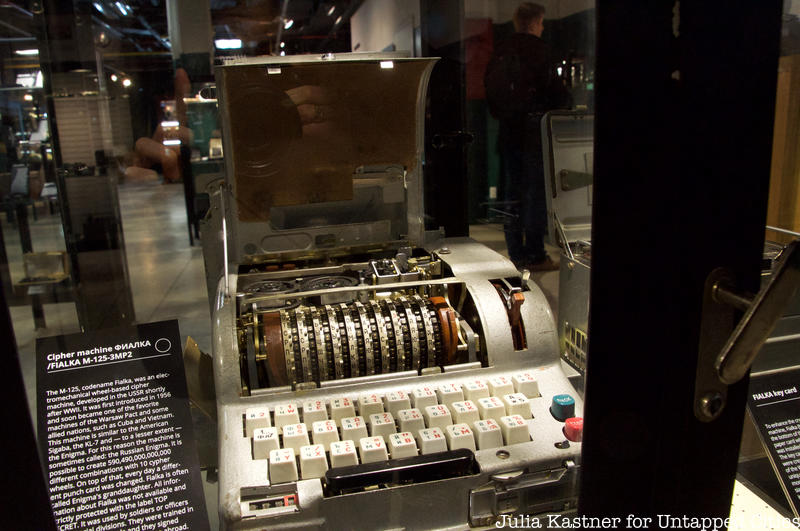
The Enigma Machine emerged out of World War II as the famous encryption device that stumped the Allied forces with its millions of possible code combinations. But in the KBG museum you can see an encryption machine capable of not millions, but trillions of possible combinations. Developed by the USSR shortly after WWII, the Fialka Cipher machine is often referred to as the Enigma’s granddaughter and is capable of 590,490,000,000,000 code combinations.
9. Lipstick “Kiss of Death”
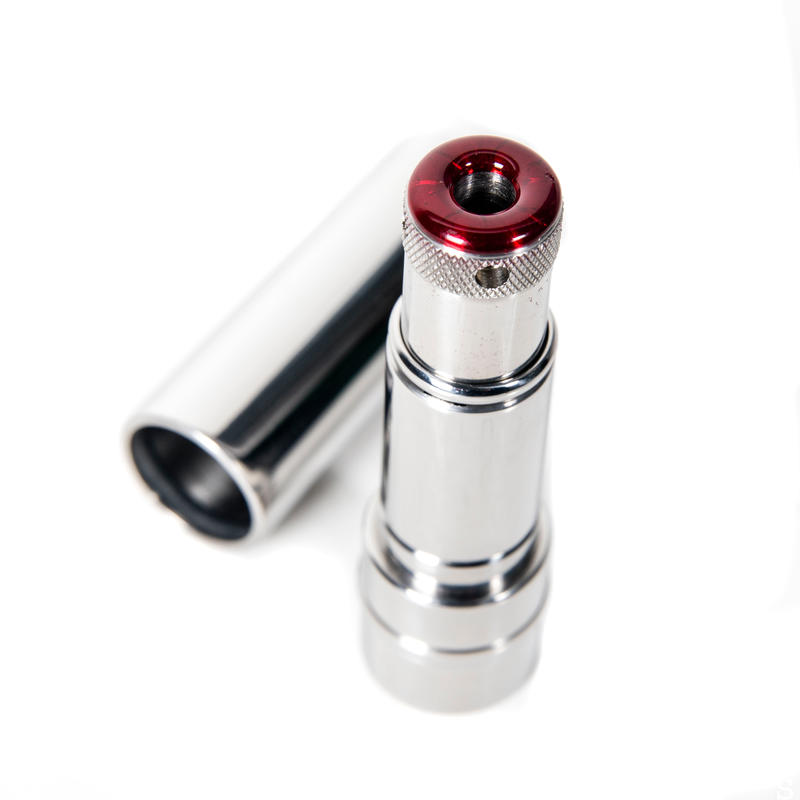 Image courtesy of the KGB Museum
Image courtesy of the KGB Museum
Made for KGB’s female agents, this unusual cosmetic gadget is actually a small pistol that fired only one shot. Kept secret, the lipstick “kiss of death” was discovered on the East-West German border and it is a perfect example of James Bond gadgets in the real world.
8. Bulgarian Umbrella
 Image courtesy of the KGB Museum
Image courtesy of the KGB Museum
The famous assassination of Georgi Markov in 1978 using a poisonous pellet shot from an umbrella in London has become an iconic tale in the world of espionage. The original Bulgarian Umbrella has disappeared, but other models of the same umbrella have survived, including this chilling copy at the museum.
7. FSB Artifacts
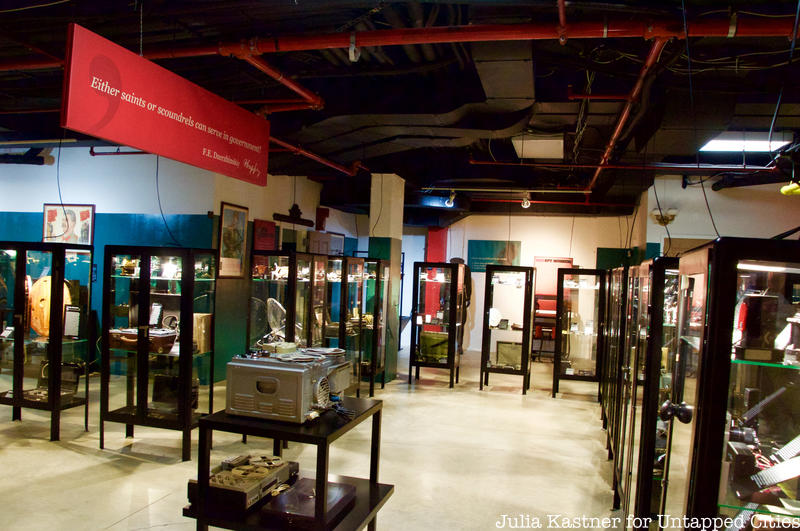
The artifacts in the museum also relate to the present. Ask the man in a trench coat to take you to the museum’s host of present-day FSB artifacts that shed light on the tools modern Russian intelligence services (FSB) use to gather information in the twenty-first century!
6. Geiger Counter
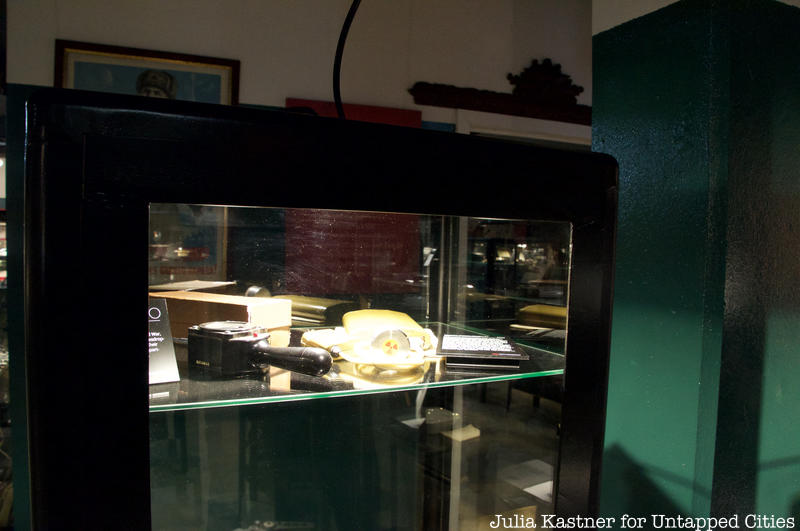
KGB officers used to put small amounts of nuclear isotopes on money and then track where money changed hands using geiger counters. This technique was used again by an ex-KGB officer in London in an attempt to catch pick pockets, but ended up spreading radiation to an alarming amount of the British population.
5. Secret Button Camera
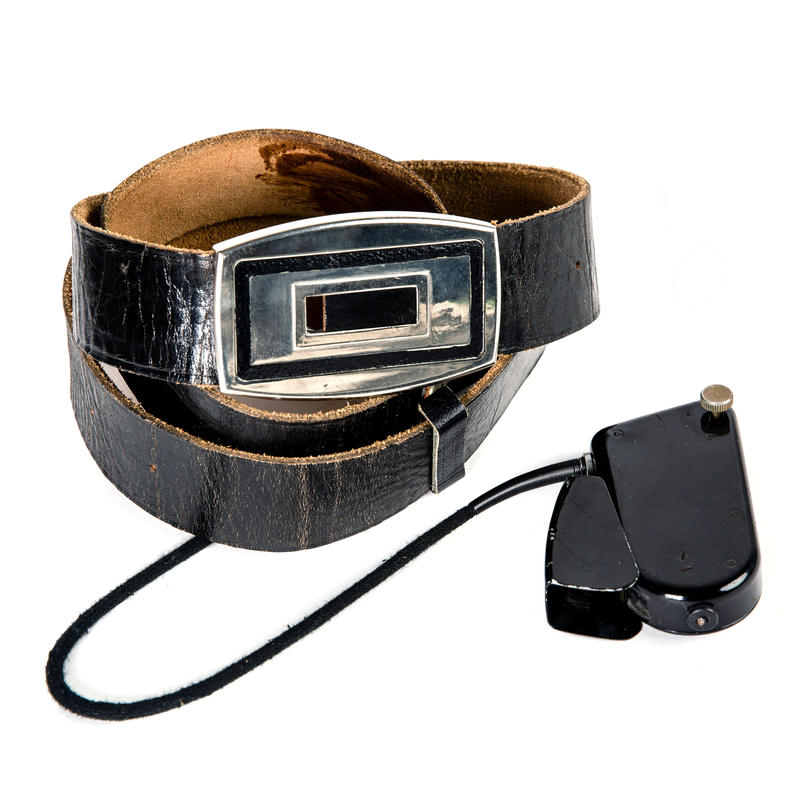 Image courtesy of the KGB Museum
Image courtesy of the KGB Museum
Try to spot a jacket-wearing mannequin towards the front of the museum. In the right jacket pocket, press the button and marvel as a tiny jacket button clicks open and shut. This secret button camera was used to take pictures of people unknowingly; see if your friends notice! Other secret cameras at the museum include cameras hidden in a belt and in a ring.
4. Phone a Russian Politician
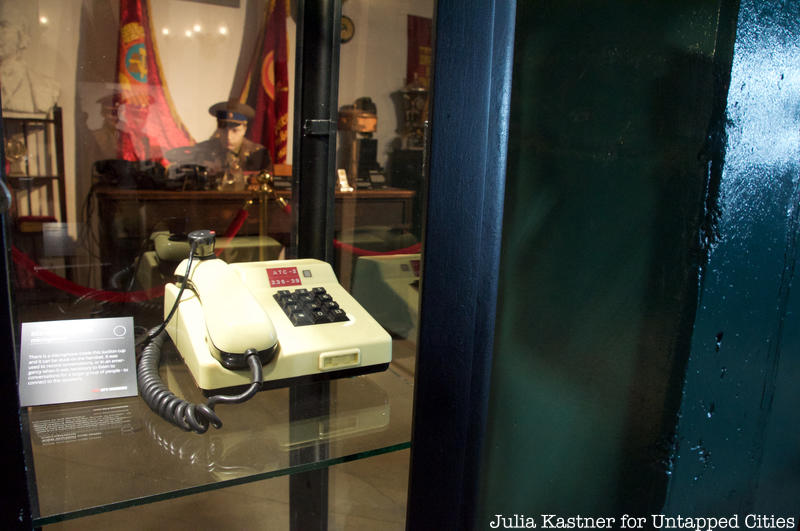
Have you ever wanted to dial Putin or Krushchev? One of the museum’s interactive exhibits lets you dial any number of famous Russian politicians for a chat over the phone.
3. Soviet Propaganda Posters
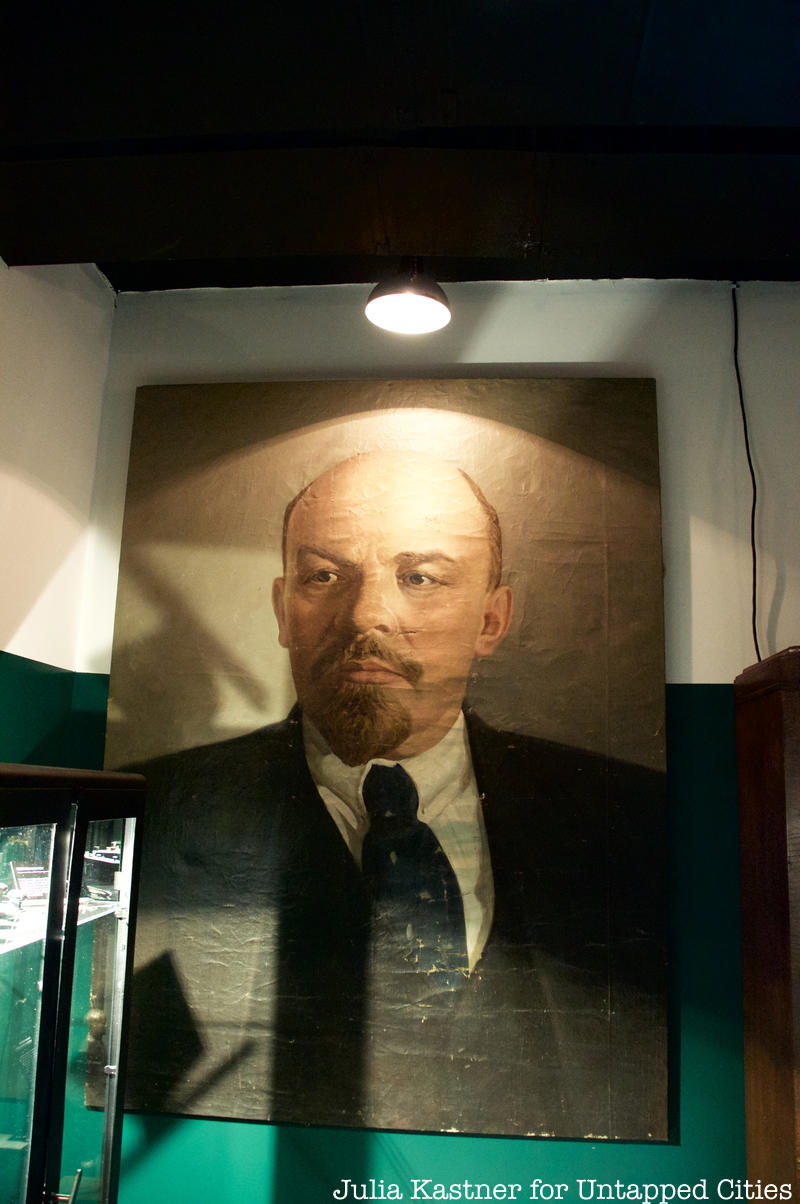
As you enter the museum, a wall of original Soviet propaganda posters adorns the wall to the right. Though all of the posters are in Russian, ask any of the museum staff to translate them for you; they provide a unique perspective on the USSR not often recognized from a US point of view.
2. Try to escape a KGB Torture Chair
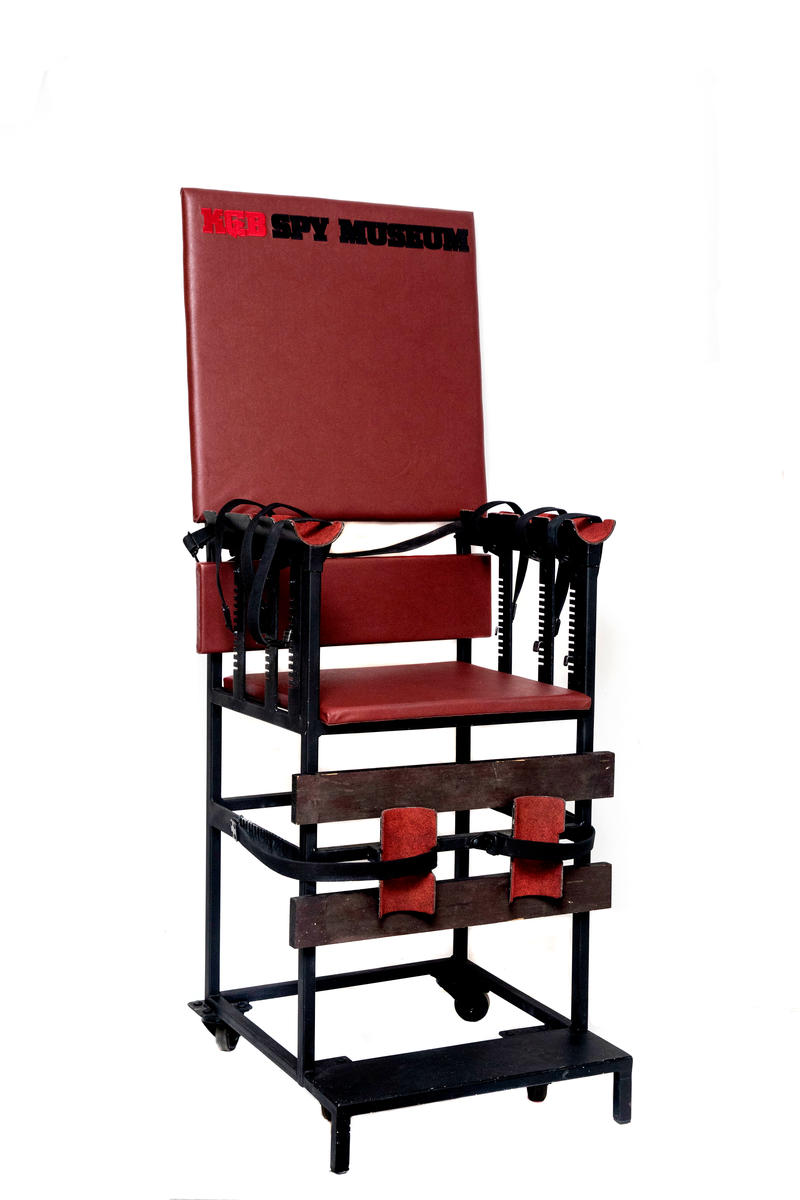 Image courtesy of the KGB Museum
Image courtesy of the KGB Museum
If the KGB needed to get rid of someone without killing them, they often sent them to a prison under the guise of a mental hospital and tortured them. Strap in to this KBG torture chair that was actually used in one of the mental hospitals and see if you can get out!
1. Become a KGB Officer
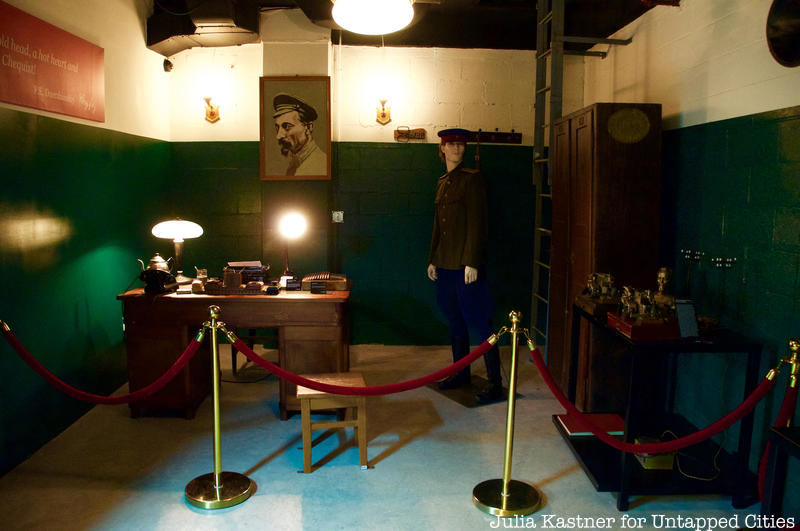
Don’t forget to don one of the authentic and extremely heavy KGB coats and hats and take a picture as a KGB officer using another favorite interactive feature of the museum!
Though the KGB Museum focuses on the past, its contents are of relevance to the present and future, too. The technological race it shows between the United States and Russia still persists today, and the vast leaps in espionage innovation portrayed in the range of artifacts at the museum gives its visitors a unique perspective on the future. A collection of astonishing variety and immersive interactive experiences, the KGB Spy Museum is a rewarding visit for New Yorkers of all ages.





